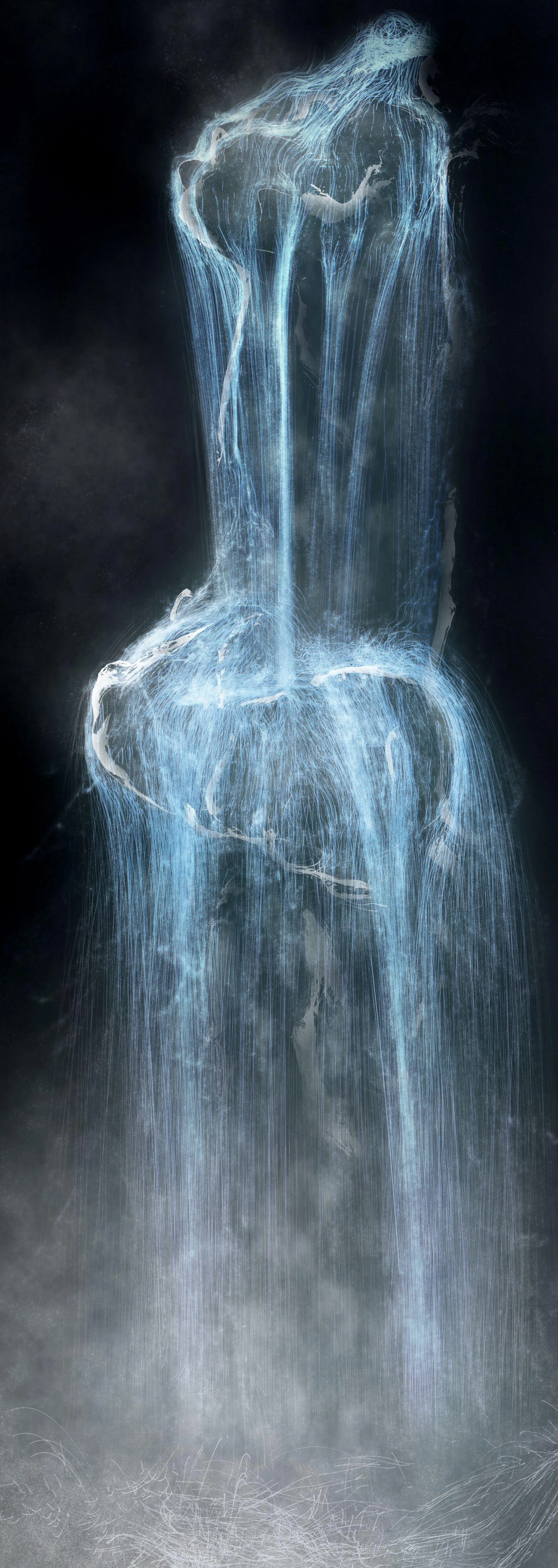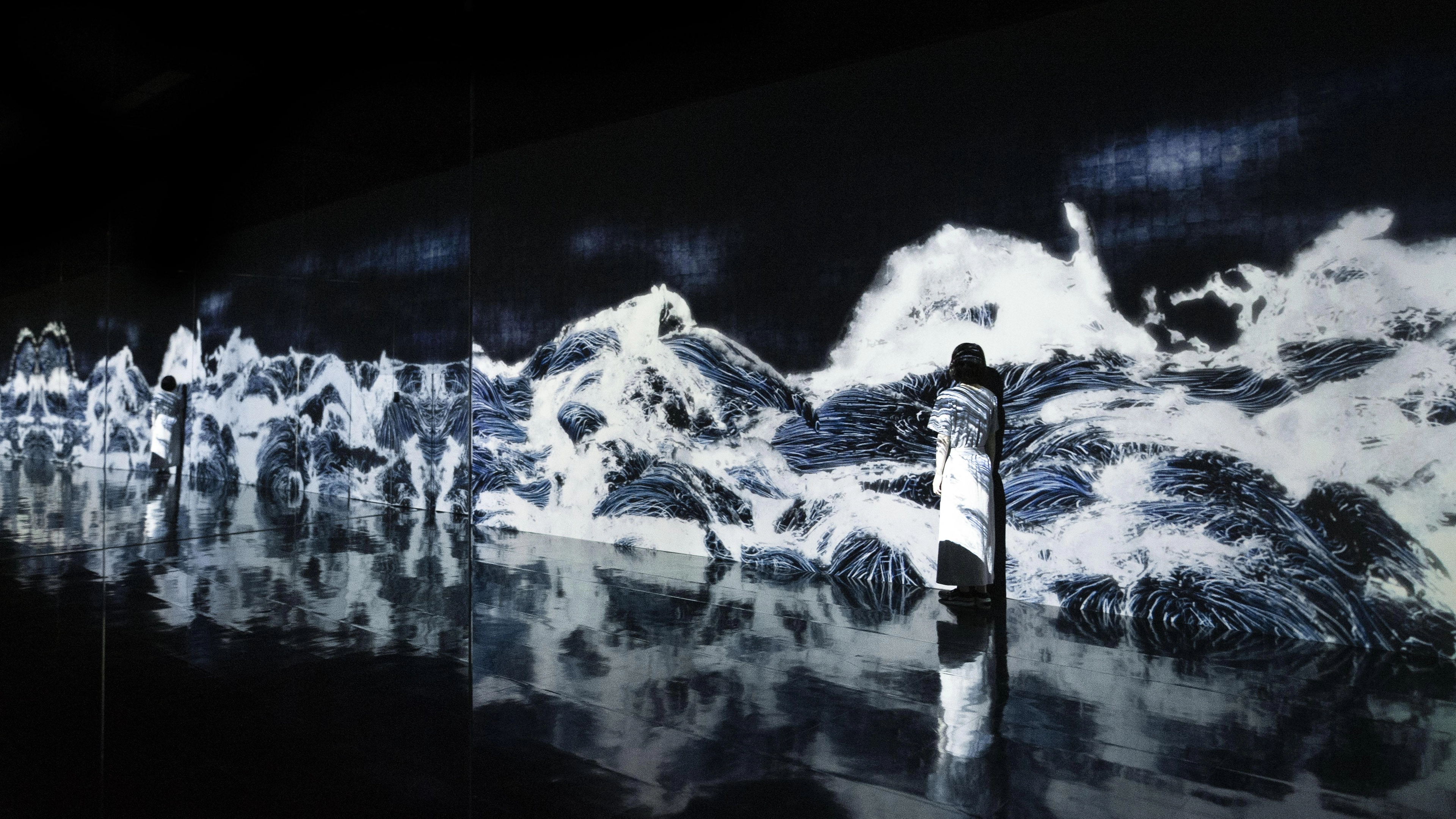teamLab: Born From the Darkness a Loving, and Beautiful World | teamLab

EXPOSIÇÃO PASSADA
2019.4.20(Sat) - 6.16(Sun)Himeji City Museum of Art, Hyogo

EXPOSIÇÃO PASSADA
2019.4.20(Sat) - 6.16(Sun)Himeji City Museum of Art, Hyogo
Obras
Sobre teamLab
teamLab (f. 2001) is an international art collective. Their collaborative practice seeks to navigate the confluence of art, science, technology, and the natural world. Through art, the interdisciplinary group of specialists, including artists, programmers, engineers, CG animators, mathematicians, and architects, aims to explore the relationship between the self and the world, and new forms of perception.
In order to understand the world around them, people separate it into independent entities with perceived boundaries between them. teamLab seeks to transcend these boundaries in our perceptions of the world, of the relationship between the self and the world, and of the continuity of time. Everything exists in a long, fragile yet miraculous, borderless continuity.
teamLab’s works are in the permanent collection of the National Gallery of Victoria, Melbourne; Art Gallery of New South Wales, Sydney; Art Gallery of South Australia, Adelaide; National Gallery of Australia, Canberra; Amos Rex, Helsinki; Museum of Contemporary Art, Los Angeles; Asian Art Museum, San Francisco; Borusan Contemporary Art Collection, Istanbul; and Asia Society Museum, New York, among others.
teamlab.art
Biographical Documents
teamLab is represented by Pace Gallery, Martin Browne Contemporary and Ikkan Art.
Detalhes do local
teamLab: Born From the Darkness a Loving, and Beautiful World
Duração
2019.4.20(Sat) - 6.16(Sun)
Horas
10:00 – 17:00 (Last Entry 16:30)
*From April 27 to May 6
10:00 – 18:00 (Last Entry 17:30)
*From April 27 to May 6
10:00 – 18:00 (Last Entry 17:30)
Fechado
Mondays
*Open April 29 and May 6
*Open April 29 and May 6
Valor do Ingresso
Adult JPY 1,400 (1,200)
High School / University Student JPY 1,000 (800)
Elementary / Junior High School Student JPY 600 (400)
Free for Preschool Children
*Price inside the brackets ( ) applies to Early Bird Tickets.
*Early Bird Tickets are available from Friday, March 8 - Friday, April 19.
*Early Bird Ticket pricing applies to groups of more than 20 people.
Tickets are available at:
- Himeji City Museum of Art
*Only General Tickets (not Early Bird Tickets) are available onsite.
- Ticket Pia (P code : 992-130)
- Lawson Ticket (L code: 53564)
- Seven Eleven
- e+
- Major Play Guide (e.g. CN Play Guide)
- Convenience Stores
*Early Bird Tickets are available from Friday, March 8 - Friday, April 19.
*Both General Tickets and Early Bird Tickets are available.
High School / University Student JPY 1,000 (800)
Elementary / Junior High School Student JPY 600 (400)
Free for Preschool Children
*Price inside the brackets ( ) applies to Early Bird Tickets.
*Early Bird Tickets are available from Friday, March 8 - Friday, April 19.
*Early Bird Ticket pricing applies to groups of more than 20 people.
Tickets are available at:
- Himeji City Museum of Art
*Only General Tickets (not Early Bird Tickets) are available onsite.
- Ticket Pia (P code : 992-130)
- Lawson Ticket (L code: 53564)
- Seven Eleven
- e+
- Major Play Guide (e.g. CN Play Guide)
- Convenience Stores
*Early Bird Tickets are available from Friday, March 8 - Friday, April 19.
*Both General Tickets and Early Bird Tickets are available.
Acesso
Local
Himeji City Museum of Art
Special Exhibition Gallery
68-25 Honmachi, Himeji City, Hyogo, Japan 670-0012
Special Exhibition Gallery
68-25 Honmachi, Himeji City, Hyogo, Japan 670-0012
From JR Sanyo Electric Railway Himeji Station
Take Shinki bus [No. 3, 4, 5, 61, 62, 64, 81, 82, 84, 86] from platform 7 or 8
After approx. 8 minutes, get off at [Himeyama Park South, Medical Center, Himeji City Museum of Art] station.
20 minute walk from JR Sanyo Electric Railway Himeji Station.
For more information, please see here.
Take Shinki bus [No. 3, 4, 5, 61, 62, 64, 81, 82, 84, 86] from platform 7 or 8
After approx. 8 minutes, get off at [Himeyama Park South, Medical Center, Himeji City Museum of Art] station.
20 minute walk from JR Sanyo Electric Railway Himeji Station.
For more information, please see here.
Organizadores
Himeji City Museum of Art
THE KOBE SHIMBUN
SUN TELEVISION CO .,LTD.
TAKEDA PRINTING CO.,LTD.
THE KOBE SHIMBUN
SUN TELEVISION CO .,LTD.
TAKEDA PRINTING CO.,LTD.
Patrocinadores
Kajima Corporation
Suporte
RADIO KANSAI LTD.
Exposições Próximas

Spatial Calligraphy, Reversible Rotation and Crane - Itami Blue Light, Day & Night
2019.7.24(Wed) - Permanente
Osaka International Airport (Itami) SAKURA LOUNGE, Osaka
Public Art

Universe of Water Particles
2015.7.24(Fri) - Permanente
DOJIMA RIVER FORUM, Osaka

teamLab Botanical Garden Osaka
2022.7.29(Fri) - Permanente
Nagai Botanical Garden, Osaka
teamLab Open Air Museum







